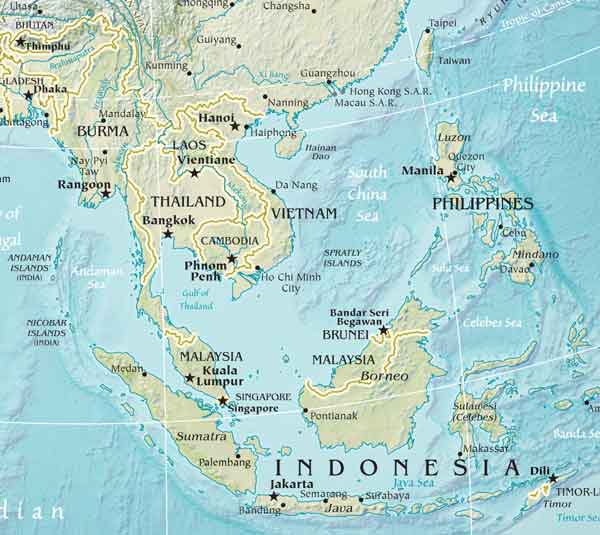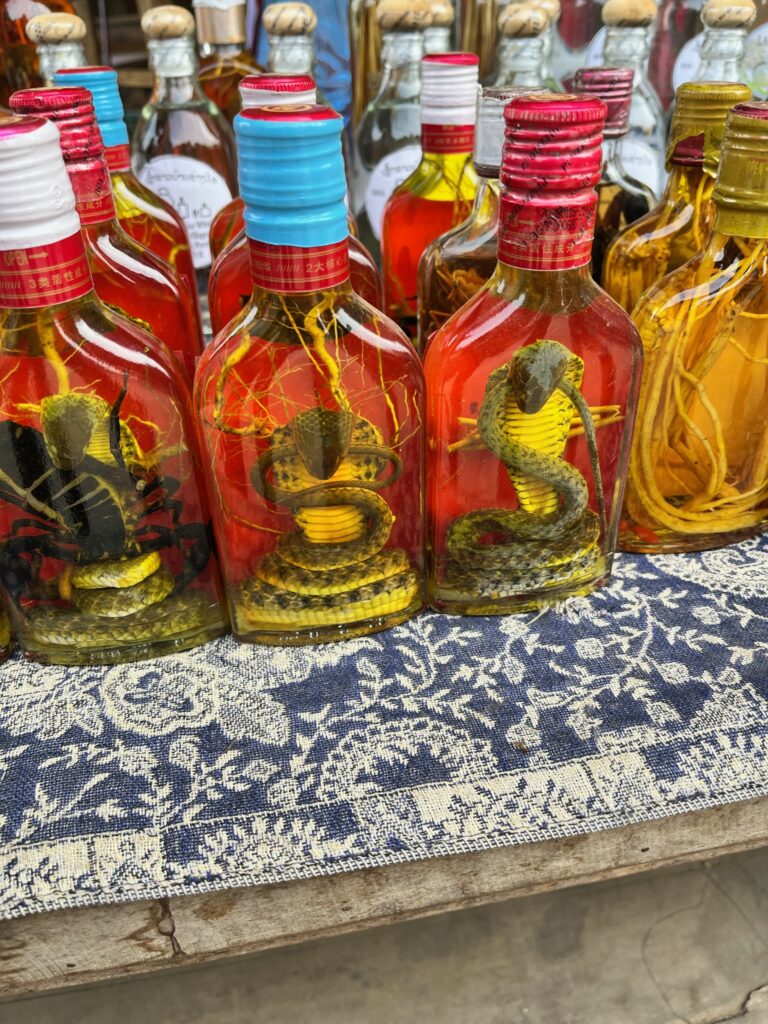
When you travel to Southeast Asia one thing you are bound to come accross at some point or another is “happy water.” While backpacking in Southeast Asia was frequently offered this spirit in various settings. During excursions like the Ha Giang Loop and the Gibbon Experience. Locals also offered the beverage while in Sapa, Vietnam and at most of my home stay accommodations.
What is ‘happy water’?
Southeast Asia is a region that’s home to a diverse range of cultures, languages, and traditions. However, one thing that unites many of the people in this region is a love of happy water. This potent drink is also known as ‘lao-lao’ or ‘rice whiskey’ in some countries. It is a popular choice for people who want to relax, socialize, and have a good time.
Happy water is especially popular in rural areas. It’s often homemade using traditional methods passed down through generations. To make the the drink you ferment rice, and then distill it to create a potent alcohol.
However, not all happy water is created equal. The strength, flavor, and quality of the drink can vary widely depending on the region and the method of production. Some happy water is smooth, light, and easy to drink, while others are fiery, rough, and full of flavor.
In some countries in Southeast Asia, happy water is considered a symbol of hospitality. Offering happy water to guests is a sign of welcome, and is a way of fostering good relationships and creating a convivial atmosphere. In this way, happy water is much more than just a drink – it’s a social lubricant that brings people together.
Another reason why happy water is so popular in Southeast Asia is that it’s often much cheaper than commercial alcohol. With many people living in poverty, the ability to make and enjoy their own alcohol is an important part of their culture and way of life. With limited access to commercial products for those living in remote ares so home-brewed happy water is the only option.

What you need to know?
However, there are some downsides to happy water. The unregulated nature of production means that the alcohol content can vary dramatically. Unfortunately, many people have suffered serious health problems as a result of drinking contaminated or poorly distilled happy water. In addition, the lack of regulation also means that producers may use harmful additives or chemicals to speed up the fermentation process or enhance the flavor.
In some countries, the government has taken steps to regulate the production of happy water. This has led to the creation of licensed distilleries, which are subject to regular inspections and quality control standards. However, in other countries, the production of happy water remains unregulated. There can be a higher risk of health problems for those who consume it.
Despite the risks, happy water remains a popular part of daily life in Southeast Asia. For many people, it’s an important symbol of their culture and traditions. It plays a vital role in social gatherings, celebrations, and ceremonies. Whether sipped slowly on a lazy afternoon or drunk enthusiastically at a loud party, happy water is a drink that brings joy, relaxation, and a sense of community.
Happy water is much more than a drink in Southeast Asia; it’s a cultural symbol that represents the region’s traditions and hospitality. While it’s not without its risks, many are working towards creating regulations and standards for happy water production. At the end of the day, happy water represents the simple joys of life and the importance of human connection.
Pro tip:
When you travel to Southeast Asia be sure to ask the locals in each country for their specific way to toast the drink. I promise you won’t be disappointed 🙂
For more tips about travel make sure to subscribe!